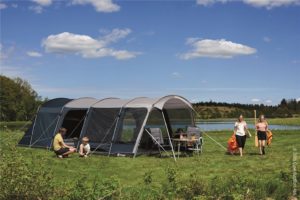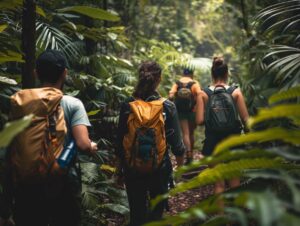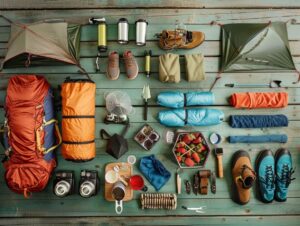

Vaibhav
- Categories: Hiking
Looking to escape the hustle and bustle of city life and immerse yourself in the beauty of nature? Discover the Cheviot Hills – your guide to everything you need to know before embarking on a hiking adventure in this stunning region.
From popular trails and essential gear to safety tips and wildlife encounters, we’ve got you covered. Lace up your hiking boots and get ready to explore the rugged terrain and breathtaking landscapes of the Cheviot Hills.
Key Takeaways:

- The Cheviot Hills offer unique and popular hiking trails, making it a great destination for outdoor enthusiasts.
- Proper preparation is key for a successful hike in the Cheviot Hills. Pack appropriate gear and supplies for both day and overnight trips.
- Be prepared for varying terrains, weather conditions, and wildlife encounters. Follow safety tips and know what to do in case of an emergency.
How to Prepare for Hiking in the Cheviot Hills
Thorough preparation is paramount for a successful hiking expedition in the Cheviot Hills. This entails meticulously choosing appropriate gear from renowned brands such as Mammut and Mammut UK to guarantee optimal levels of safety and comfort.
What Gear Do You Need?
To ensure a safe and enjoyable hiking experience, it is essential to have quality gear. This gear should include walking boots, weather-appropriate clothing, and rucksacks from reputable brands like Mammut and Mammut UK.
When setting out on a hiking trip in the Cheviot Hills, investing in high-quality equipment is crucial. Alongside walking boots, weather-appropriate clothing, and rucksacks, other essential items to consider include a robust hiking tent, a reliable head torch for nighttime navigation, and a robust water bottle for hydration on the paths.
Well-known brands such as Mammut and Mammut UK offer a wide range of superior outdoor gear, such as the Mammut T Aenergy GTX walking boots and the Mammut Trion Spine rucksack. These products are renowned for their durability and high performance in challenging terrains.
What Should You Pack for a Day Hike?
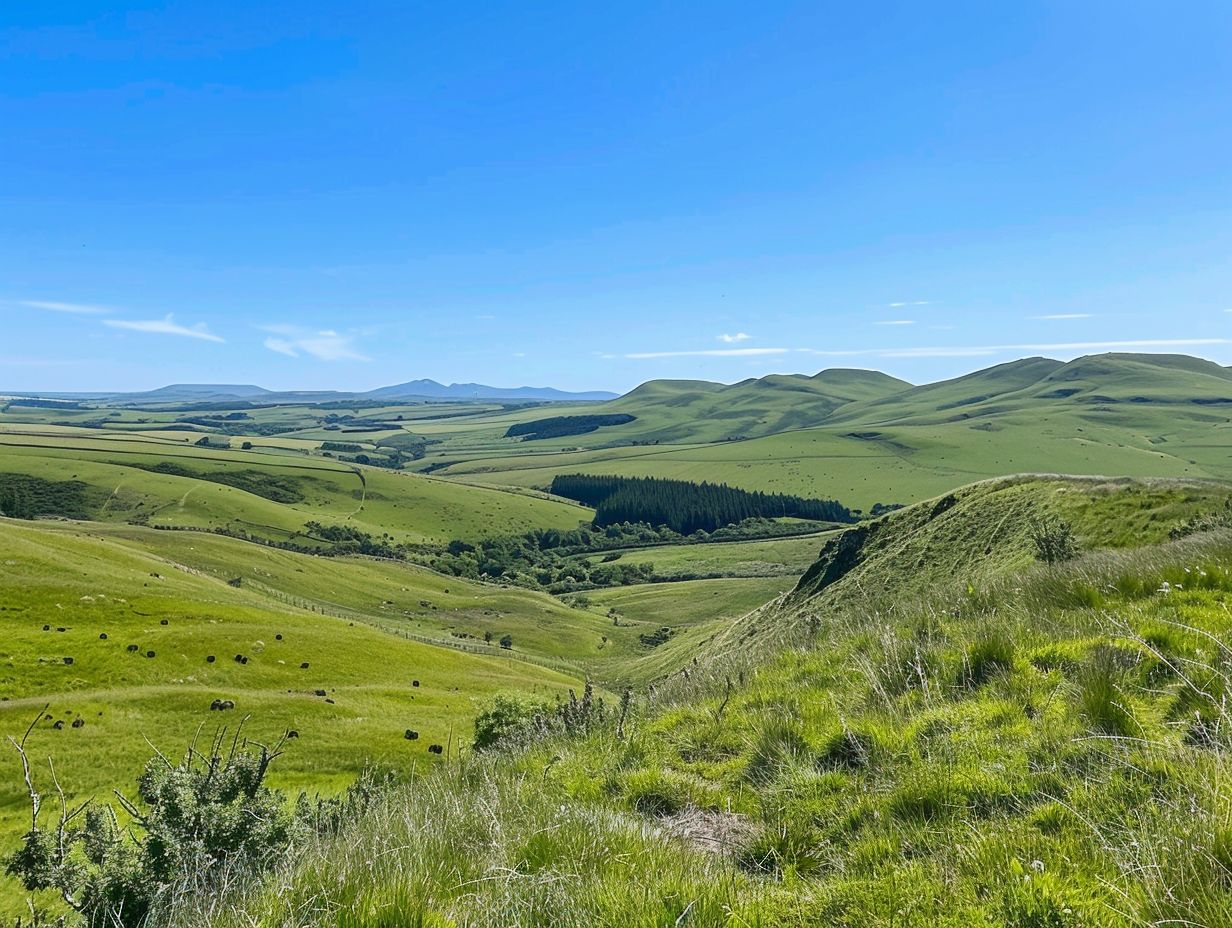
When preparing for a day hike in the Cheviot Hills, it is essential to include essential items such as water, snacks, a first-aid kit, and a comprehensive hiking guide, in addition to equipment from Mammut. Carrying a map of the area and a compass is crucial for navigation, especially in unfamiliar terrain.
The high-quality rucksacks from Mammut, featuring comfortable straps and generous storage capacity, facilitate the transportation of these provisions. It is recommended to pack a lightweight waterproof jacket and additional layers, as weather conditions can quickly change during a hike.
Moreover, it is wise to carry a multi-tool for unforeseen repairs en route. The sturdy walking poles offered by Mammut can provide stability and assistance on challenging trails, thus improving the overall hiking experience.
What Should You Pack for an Overnight Hike?
When preparing for an overnight hike in the Cheviot Hills, it is recommended that one’s packing list includes essential items such as a tent, sleeping bag, additional clothing, a reliable hiking guide, and high-quality gear from Mammut UK.
Furthermore, for an overnight hike, it is of paramount importance to pack a lightweight camping stove, extra food including high-energy snacks, a water filtration system, a multi-tool, a headtorch, and a first aid kit.
These provisions are critical for meal preparation, sustaining energy levels and hydration, navigating in low-light conditions, facilitating repairs, and addressing minor injuries that may arise during the excursion. By investing in durable gear from Mammut UK, one can ensure the possession of reliable equipment capable of enduring the rigours of an extended hike.
What to Expect on Your Hike in the Cheviot Hills?
Exploring the Cheviot Hills presents an engaging experience characterised by diverse terrain, unpredictable weather patterns, and the chance to observe a wide array of wildlife, promising an adventure at every juncture.
What Is the Terrain Like?
The topography of the Cheviot Hills encompasses a variety of hiking trails, ranging from gentle inclines to more demanding rocky paths, catering to hikers with diverse skill levels.
Hikers venturing into the Cheviot Hills will encounter a landscape that transitions from verdant valleys adorned with meandering streams, creating a serene ambiance ideal for a relaxed hiking experience. Alternatively, those seeking a more exhilarating outing can tackle rugged cliffs and steep ascents, providing challenges that require both physical endurance and mental fortitude.
The heterogeneous terrain of the region offers hikers the opportunity to tailor their hiking experience to suit their individual preferences in terms of difficulty level and scenic surroundings. With each twist and turn, hikers are met with a new vista, ranging from dense woodlands to vast moorlands, ensuring that every adventurer can discover a trail that aligns with their preferences.
What Is the Weather Like?
The Cheviot Hills experience varying and sometimes unpredictable weather conditions, transitioning from clear skies to sudden rain showers. Consequently, hikers must exercise thorough preparedness. Given the propensity for swift weather changes in the Cheviot Hills, visitors should remain attentive by regularly reviewing weather forecasts.
Owing to the geographical location and elevation of the hills, they are especially susceptible to fog and strong winds, contributing to the diverse weather patterns encountered.
To mitigate risks associated with inclement weather, hikers are strongly encouraged to dress in layers, carry waterproof clothing, and pack additional supplies to address unexpected weather shifts. Proactive planning and readiness play a pivotal role in ensuring a safe and enjoyable outdoor excursion in the Cheviot Hills.
What Wildlife Can You Encounter?
Hikers traversing the Cheviot Hills have the opportunity to observe a diverse range of wildlife, encompassing birds, deer, and various small mammals, thereby enhancing the natural allure of their hiking endeavours.
The Cheviot Hills are renowned for hosting an impressive assortment of bird species, including curlews, red grouse, and peregrine falcons, rendering it a haven for keen birdwatchers.
It is not uncommon to witness the stately red deer traversing the hill slopes, affording observers a glimpse into the region’s rich biodiversity. Furthermore, the elusive presence of creatures such as foxes, badgers, and hares contributes an element of enigma to the rugged terrain.
Regardless of whether one is a nature enthusiast or simply seeking a peaceful retreat, the Cheviot Hills offer an ideal setting for memorable wildlife encounters amidst the backdrop of their hiking pursuits.
Important Safety Tips for Hiking in the Cheviot Hills

When engaging in hiking activities in the Cheviot Hills, it is imperative to adhere to essential safety guidelines to guarantee a secure and enjoyable outing. This includes thorough preparation for potential emergencies and a comprehensive understanding of the terrain.
How to Stay Safe on the Trails?
Ensuring safety while traversing the trails within the Cheviot Hills necessitates adherence to designated paths, utilization of suitable equipment, and staying abreast of trail conditions. Hikers can significantly increase their safety by carrying fundamental provisions such as a map, compass, first aid kit, and an ample supply of water and snacks for the excursion.
It is imperative to consult the weather forecast prior to departure and communicate one’s intended route and anticipated return timeframe to a reliable individual. In case of emergencies, possession of a charged mobile phone or a personal locator beacon can prove essential.
Acquainting oneself with the wildlife present in the vicinity and exhibiting reverence for the natural environment’s boundaries contributes to fostering a harmonious cohabitation throughout the hiking experience.
What to Do in Case of an Emergency
In case of an emergency situation arising during a hike in the Cheviot Hills, it is imperative to maintain composure, utilise all available communication devices, and adhere to the predetermined emergency protocol established prior to commencing the hike.
Should a member of the hiking group sustain an injury, the primary course of action is to assess the condition and administer immediate first aid as necessary. Proficiency in basic first-aid procedures can prove instrumental in such circumstances.
It is essential to ensure the presence of vital supplies such as a fully stocked first-aid kit, necessary medications, and pertinent emergency contact details easily accessible within the provisions of your backpack.
Familiarity with the terrain and having knowledge of prominent nearby landmarks can significantly facilitate emergency responders in swiftly locating your group. It is advisable to maintain group cohesion, foster effective communication, and remain vigilant for any indications of distress among fellow hikers.
Other Activities to Enjoy in the Cheviot Hills
Plus hiking, the Cheviot Hills present a range of alternative activities including camping, mountain biking, and fishing, thereby establishing itself as a multifaceted destination for outdoor enthusiasts.
Camping
Camping in the Cheviot Hills presents an opportunity for visitors to fully immerse themselves in the natural splendour of the region, facilitated by the availability of numerous campsites to enhance the outdoor experience.
The Cheviot Hills cater to a diverse range of preferences, offering both rudimentary tent setups for those inclined towards a back-to-basics approach, as well as the convenience of caravan sites equipped with hook-ups. Many campsites within the area afford picturesque vistas of the undulating hills and valleys, serving as an ideal retreat for avid hikers and nature enthusiasts.
Patrons can bask in the tranquil ambience beside a crackling campfire, set against the backdrop of a clear night sky, fostering enduring memories. Provision of essential amenities such as washrooms, water access points, and designated picnic areas ensures a seamless camping expedition, affording visitors a hassle-free experience replete with necessary facilities.
Mountain Biking
The Cheviot Hills offer a variety of trails that cater to mountain biking enthusiasts, providing options for both novice riders and experienced individuals seeking a challenge.
Spanning over 350 square miles, the diverse terrain of the area offers a combination of smooth flowing paths, technical descents, and demanding climbs suitable for riders of all skill levels. This diverse range of trails presents riders with the opportunity to progress and test their abilities.
Riders can immerse themselves in the picturesque surroundings of the surrounding countryside while traversing through ancient woodlands, heather-clad moors, and serene valleys. The trails boast unique features such as natural rock jumps, exciting switchbacks, and the chance to encounter wildlife such as deer and various bird species along the route.
Fishing

Fishing in the Cheviot Hills presents a peaceful retreat for anglers, encompassing numerous rivers and streams that provide ideal settings for a tranquil day spent by the waterside. These hills are respected for their varied range of fishing opportunities, catering to both beginners and experienced anglers alike.
Notable spots such as the River Coquet and College Burn attract fishing enthusiasts in search of brown trout, salmon, and sea trout. The calm atmosphere and picturesque surroundings within this area create an ideal backdrop for a serene and rewarding fishing trip.
Whether enjoying the art of fly fishing in the clear waters or angling from the river banks, the Cheviot Hills offer a chance to connect with nature and secure valuable catches.
Frequently Asked Questions
What are the Cheviot Hills?
The Cheviot Hills are a range of hills on the England-Scotland border, stretching approximately 40 miles from the Tyne Gap to the River Tweed. They offer a stunning landscape with rolling green hills, picturesque valleys, and scenic trails.
How difficult are the hiking trails in the Cheviot Hills?
The difficulty level of hiking trails in the Cheviot Hills can vary, from easy to challenging. There are trails suitable for all levels of hikers, so make sure to research and choose a trail that matches your fitness and experience level.
What is the best time to go hiking in the Cheviot Hills?
The best time for hiking in the Cheviot Hills is between late spring and early autumn. The weather during these months is usually mild and pleasant, and the trails are less muddy and easier to navigate. However, always check the weather forecast before heading out and be prepared for sudden changes in weather.
Do I need a guide to go hiking in the Cheviot Hills?
While not necessary, it is highly recommended to have a guide when hiking in the Cheviot Hills. A guide can provide valuable information about the area, help navigate the trails, and ensure your safety. If you are new to hiking, it is especially important to have a guide with you.
What should I pack for a hike in the Cheviot Hills?
It is essential to pack appropriate gear for your hike in the Cheviot Hills. This includes sturdy hiking boots, a waterproof jacket, a map, plenty of water, snacks, and a first aid kit. It is also advisable to bring a fully charged phone and a whistle in case of emergencies.
Are there any camping options in the Cheviot Hills?
Yes, there are several camping options in the Cheviot Hills, including campsites, bothies, and wild camping spots. However, make sure to follow the rules and regulations for camping in the area, such as leaving no trace and obtaining necessary permits.
Share:
By submitting your email address, you are agreeing to receive marketing emails from theexpertcamper.co.uk.
We’ll never share your email address and you can unsubscribe at any time. Privacy policy
Related Posts

A Seasonal Guide To Hiking In The Peak District
Are you ready to lace up your hiking boots and explore the stunning landscapes of the Peak District? This seasonal guide will take you through

Hiking Challenges Preparing For Your First Ultrahike
Are you ready to take your hiking adventures to the next level? Ultra-hiking offers a unique combination of physical and mental challenges, breathtaking scenery, and
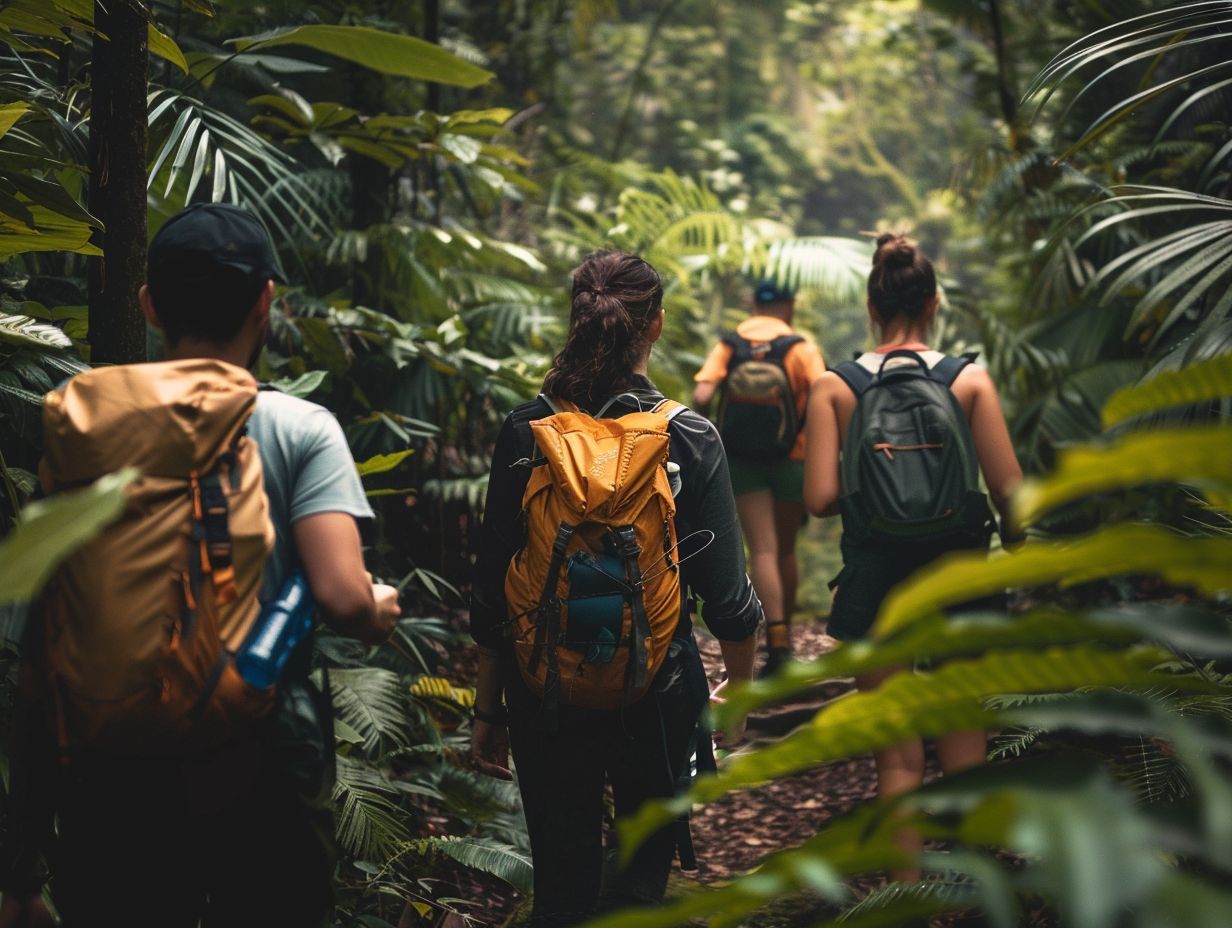
Ecofriendly Hiking Tips For Sustainable Adventures
Are you an outdoor enthusiast looking to minimise your impact on the environment while enjoying the great outdoors? Eco-friendly hiking is the perfect solution! We
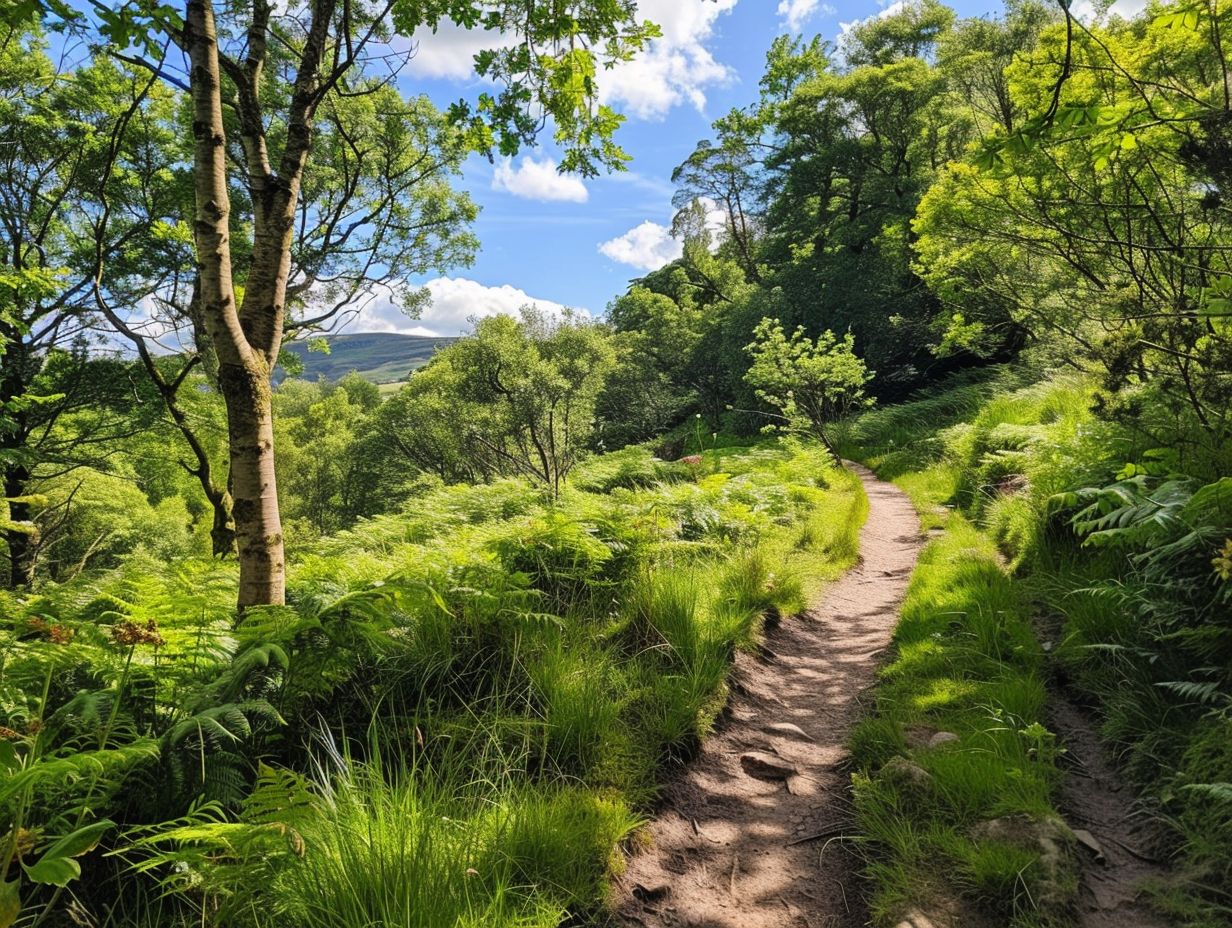
The Best Hiking Trails For Experiencing UK Wildlife
When exploring the picturesque hiking trails of the UK, you can expect to encounter a diverse array of wildlife. From majestic birds soaring overhead to

Wildflower Walks The Best Trails For Nature Lovers
Are you a nature lover looking to embark on a wildflower walk? Explore the best trails for wildflower walks, including [Trail Name 1], [Trail Name




